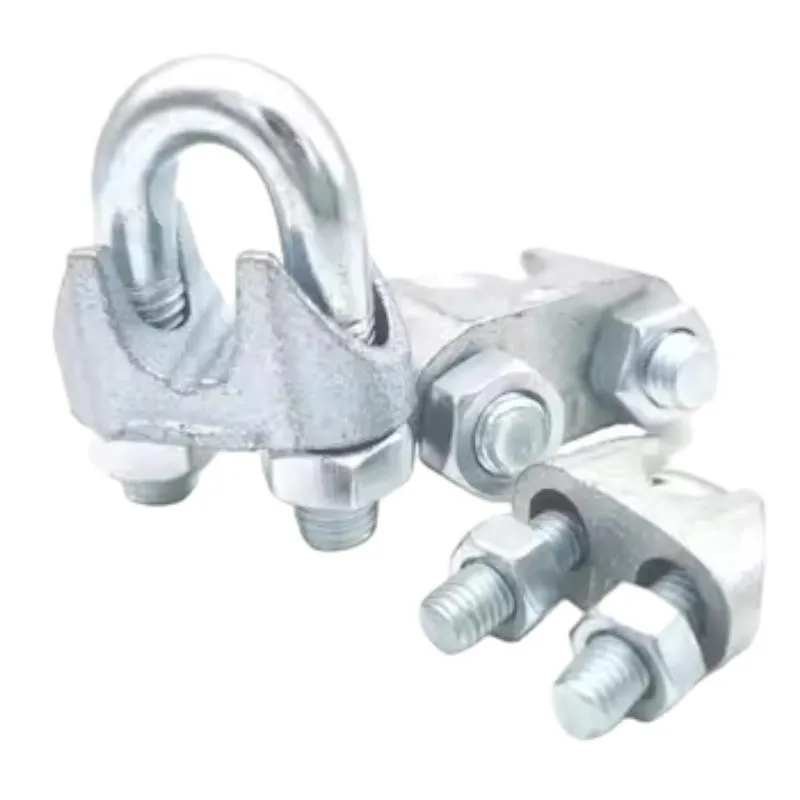Dec . 06, 2024 14:00 Back to list
stainless steel rope clips
Understanding Stainless Steel Rope Clips A Comprehensive Guide
Stainless steel rope clips are essential components in various applications ranging from construction to marine settings. Their versatility, durability, and resistance to corrosion make them a popular choice among engineers, contractors, and DIY enthusiasts. In this article, we will explore what stainless steel rope clips are, how they function, their advantages, and their applications.
What are Stainless Steel Rope Clips?
Rope clips, also known as wire rope clips or cable clamps, are mechanical devices designed to secure the ends of a wire rope or cable to form a loop. They consist of a U-shaped bolt, a saddle, and two nuts. The wire rope is inserted into the U-bolt, and the saddle sits on top, providing stability. The nuts, when tightened, secure the wire in place, preventing it from slipping.
Stainless steel rope clips come in various grades, with 316 and 304 stainless steel being the most common. Grade 316 stainless steel is known for its superior corrosion resistance, making it ideal for marine or harsh environments, while grade 304 offers adequate protection for less demanding applications.
How Do Stainless Steel Rope Clips Work?
The functionality of stainless steel rope clips is relatively straightforward. They work by creating a secure loop at the end of a wire rope. To install a rope clip, the following steps should be followed
1. Select the Right Size Clip Ensure that the size of the clip matches the diameter of the wire rope used. This ensures optimal grip and prevents slippage.
2. Position the Rope Form a loop with the wire rope, placing the end back through the clip.
3. Place the Saddle Position the saddle over the wire, ensuring it sits directly above the wire that will be secured.
4. Tighten the Nuts Securely tighten the nuts onto the U-bolt, ensuring the wire is firmly clamped. It’s essential to check that the clip is tight enough to prevent movement, but excessive force should be avoided to prevent damaging the wire.
5. Check and Maintain After installation, it’s important to periodically check the tightness of the clips to ensure they maintain their grip over time.
Advantages of Stainless Steel Rope Clips
The use of stainless steel rope clips offers numerous benefits
stainless steel rope clips

1. Corrosion Resistance One of the most significant advantages is their resistance to rust and corrosion, especially in damp or marine environments. This property ensures longevity and reliability in various conditions.
2. Durability Stainless steel is known for its strength and durability, providing excellent performance under heavy loads. This is crucial in applications where safety is a top priority.
3. Versatility Stainless steel rope clips can be used across a multitude of applications, from lifting and rigging to securing cables in construction and outdoor settings.
4. Easy Installation The installation process is straightforward, making these clips accessible for both professionals and DIYers alike.
5. Low Maintenance Once installed, stainless steel rope clips require minimal maintenance, primarily needing occasional checks for tightness.
Applications of Stainless Steel Rope Clips
Stainless steel rope clips are utilized in various industries and applications
1. Marine Applications Due to their corrosion resistance, they are widely used in boating, sailing, and fishing industries to secure lines and rigging.
2. Construction In construction settings, these clips are used to hold cables and wires securely, ensuring safety and integrity in scaffolding and structural applications.
3. Transportation They are employed in various transportation applications, securing cargo and ensuring that loads remain stable during transit.
4. Outdoor Activities For camping, hiking, and other outdoor activities, stainless steel rope clips can be used to create secure ties and loops for tarps and other gear.
Conclusion
Stainless steel rope clips are a vital component in many industries, providing secure, durable, and corrosion-resistant solutions for fastening wire ropes. Whether for professional or personal use, understanding the function and benefits of these clips can help ensure safety and reliability in your projects. By selecting the right size and grade, and properly installing and maintaining them, users can maximize their effectiveness and longevity in a variety of applications.


